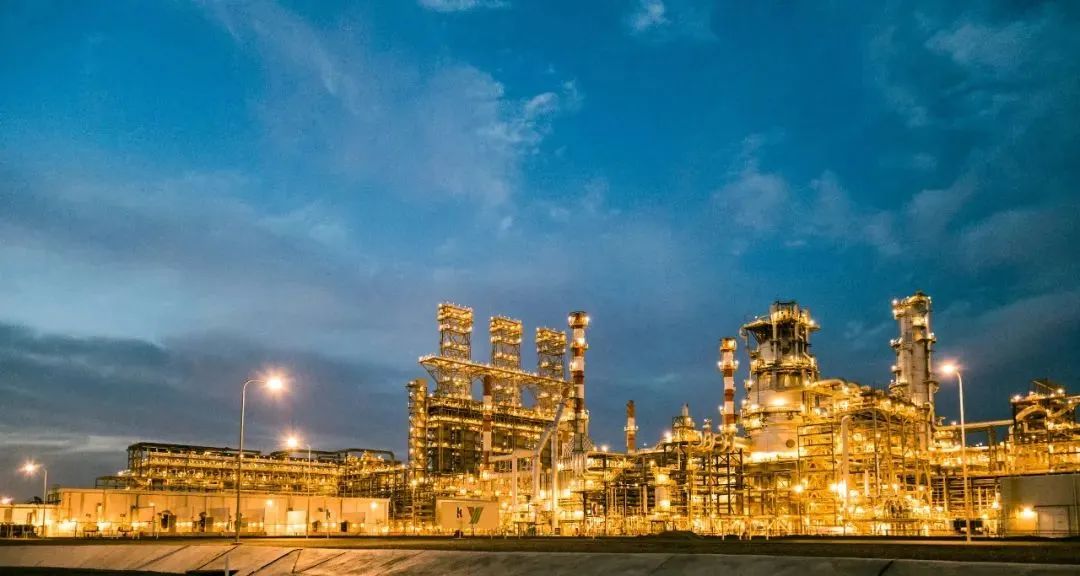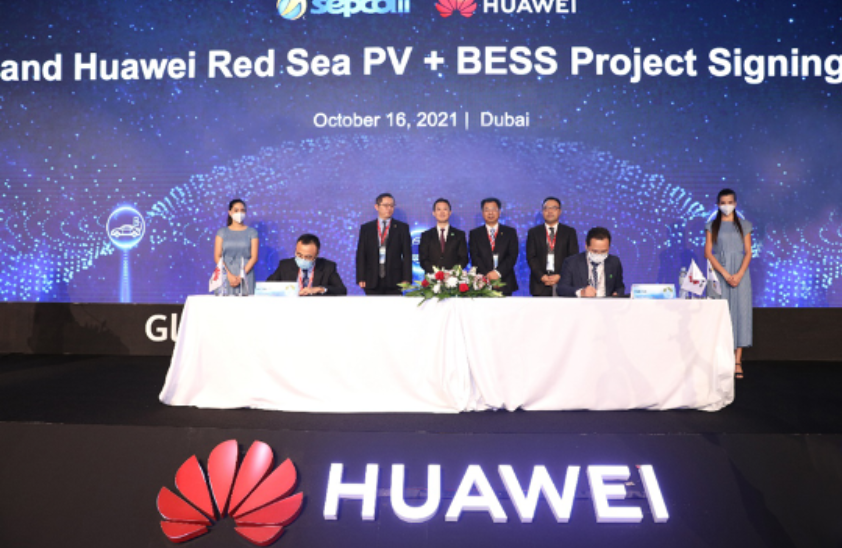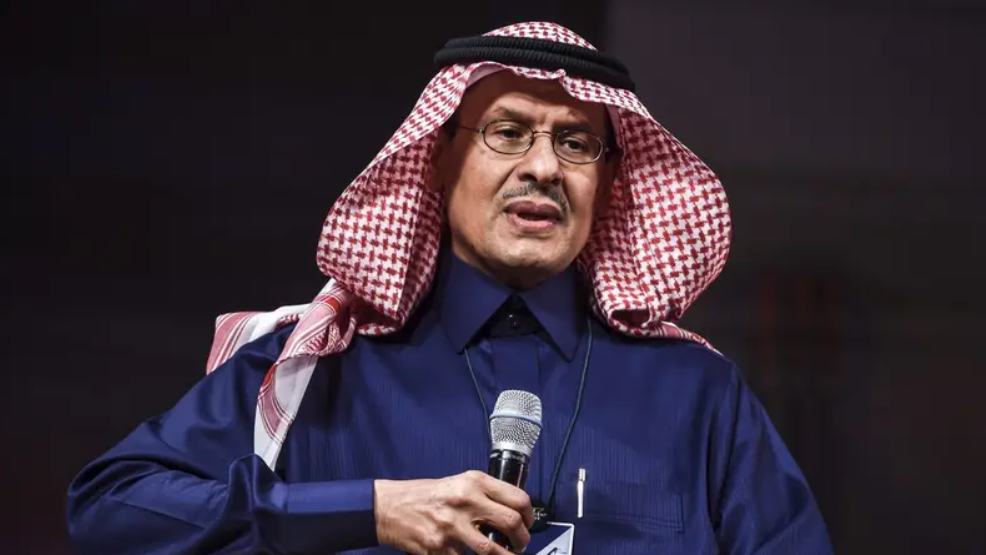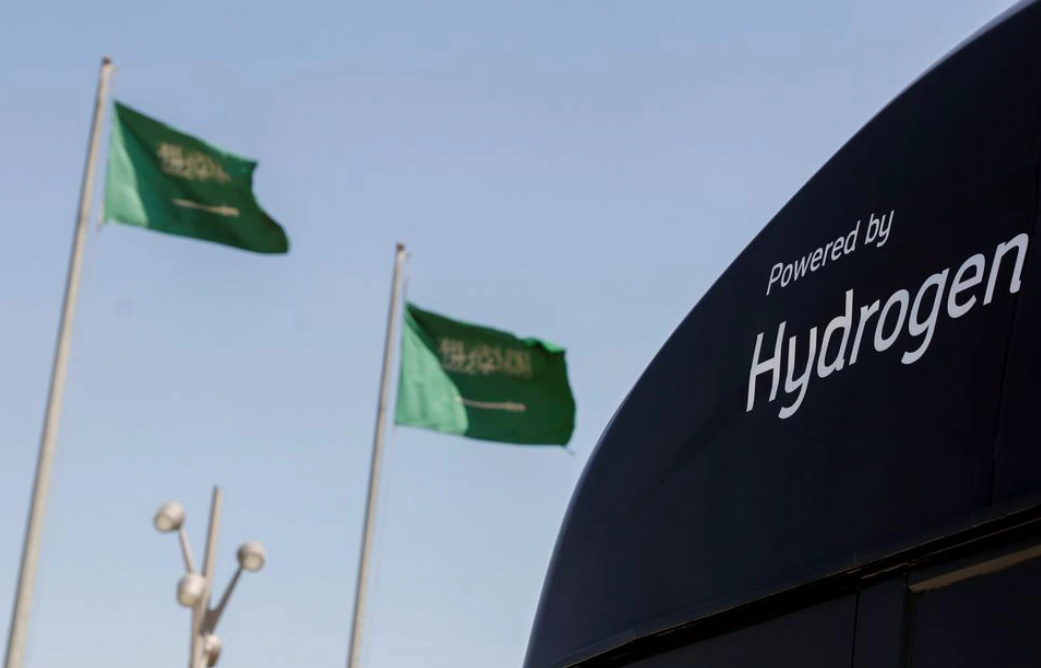KSA to Invest Another 180B in New Energy Market
From:
Zhonglin International Group Date:04-19 1326 Belong to:Industry Related
At the end of March, investments and trade cooperations between Saudi Aramco and Chinese enterprises are all over the news. All signs indicate that the opportunity for Chinese photovoltaic companies in Saudi Arabia has really appeared.
You may not believe it, KSA has already invested 450 billion yuan in new energy market! And by 2030, an additional 180 billion will be invested.

There are four "mosts" between China and Saudi Arabia - Saudi Arabia is the world's largest oil exporter; China is the world's largest oil importer; Saudi Arabia is the largest source of China's oil imports; and China is Saudi Arabia's largest trading partner.
Of all Chinese companies investing and taking roots in Saudi Arabia, Sinopec is the biggest, considering its invesetment capacity and general layout, not to mention the fact that Sinopec has invested Saudi Arabia for 23 years.
On December 7, 2022, China signed 34 investment agreements with Saudi Arabia in one go, including multiple fields such as green hydrogen, photovoltaics, communication, cloud services, and real estate. Participating companies include Huawei, China Construction Engineering Corporation, China General Nuclear Corporation, and photovoltaic company Jingke. According to Saudi media reports, the total value of these 34 investment agreements is as high as $29.26 billion.
01 Aramco's lavish investment

In 2012, Sinopec and Saudi Aramco invested $8.6 billion to jointly build the Saudi Aramco Sinopec Yanbu Refinery. This is one of Sinopec's largest overseas assets and also the largest project invested by China in Saudi Arabia to date.
Now, it goes both ways. Since the beginning of this year, Saudi Aramco has continuously strengthened its in-depth cooperation with Chinese enterprises and governments.
On March 27th, Rongsheng Petrochemical (002493. SZ) announced that its controlling shareholder, Rongsheng Holdings, plans to transfer its 1.013 billion shares (10% of the company's total share capital plus one share) to AOC, a subsidiary of Saudi Aramco, for a total consideration of 24.6 billion yuan.
At the same time, Rongsheng Petrochemical will obtain a long-term stable crude oil supply of 480,000 barrels per day, as well as the supply of other chemical raw materials, and is expected to further expand its overseas sales channels for chemical products.
Rongsheng Petrochemical has a 10% equity stake and received a 24.6 billion investment from Saudi Aramco, with a premium of nearly 90%. On March 28th, Rongsheng Petrochemical hit the limit up.
The day before, on March 26th, the Liaoning Provincial Government held project talks with China North Industries Group and Saudi Aramco in Beijing. (North Industries Group's main business, if you are interested, you can learn about it. In addition to oil trade, this also fully demonstrates the depth of cooperation between China and Saudi Arabia.) Li Lecheng, Deputy Secretary of the Liaoning Provincial Party Committee and Governor of the Communist Party of China, and Liu Shiquan, Chairman of China North Industries Group, and Amin Nasser, President and CEO of Saudi Aramco, exchanged ideas on promoting project cooperation, And jointly attended the signing ceremony of the shareholder agreement for the fine chemical and raw material engineering projects.
The same day before, in Beijing, the Guangdong Provincial People's Government and Saudi Aramco signed a memorandum of cooperation. The memorandum proposes a collaborative framework for exploring investment opportunities in multiple fields, including energy cooperation, research and innovation, industrial projects, financial cooperation, and talent exchange.
02 Chinese enterprises have targeted on Saudi Arabia's new energy market
As is mentioned previously, as early as 2018, Saudi Arabia had a $200 billion photovoltaic strategic partnership with SoftBank in Japan, but the project was later put on hold. Afterwards, Saudi Arabia turned its attention to Chinese enterprises.
In November 2018, Saudi Arabia's first public utility scale solar photovoltaic project began construction, all using Huawei's intelligent photovoltaic solutions.
In October 2021, Huawei continued to strengthen cooperation with Saudi Arabia and signed a contract for the Red Sea project with SEPCOIII Electric Power Construction Co., Ltd. This 1300 MWh off grid energy storage project was the largest of its kind in the world at that time.

Nowadays, including companies such as Longi and Jinko, they have deep layouts in the Saudi photovoltaic market.
Longi Green Energy has deep cooperation with Saudi Arabia's ACWA Power, which is a leading professional developer, investor, and operator in fields such as electricity and renewable energy, seawater desalination, and green hydrogen energy worldwide. ACWA Power is working hard to promote Saudi Arabia's achievement of the "2030 Vision" goals.
In 2022, Longi Green Energy has successfully delivered the components of the Red Sea Red Sea New City 406MW photovoltaic project, and will continue to provide photovoltaic modules for the Sudair 1800MW project this year.
In January of this year, a consortium led by Jinko Technology has been awarded a contract to develop a 300MW THAAD Solar Independent Power Producer (IPP) project under the third round of Saudi Arabia's National Renewable Energy Program (NREP). At the same time, the Jinko Power consortium, including Jinko Power Dafra Holdings, has signed a 25 year Power Purchase Agreement (PPA) with Saudi Power Procurement Company (SPPC). The total investment of this project is approximately 800 million Shat Liar, equivalent to approximately 213 million US dollars.
Last November, China Energy Construction Corporation announced the launch of a 2.6 gigawatt Al Shuaibah solar photovoltaic project. The project is located in Al shuaibah, Jeddah City, Mecca Province, Saudi Arabia, and is jointly constructed by China Energy Construction International Group, Guangdong Thermal Power and Northwest Research Institute.
In addition to photovoltaics, there is also a heavyweight news related to Saudi Arabia's clean energy. On March 7th of this year, the Saudi Shura Committee approved the draft Memorandum of Understanding (MoU) between the Saudi Ministry of Energy and the National Energy Administration of China in the field of clean hydrogen energy.
On December 8 last year, China and Saudi Arabia signed an intergovernmental agreement and memorandum of understanding on hydrogen energy cooperation.
China and Saudi Arabia share a common vision in addressing climate change and green energy transformation, which can achieve complementary advantages of multiple elements in the hydrogen industry chain and jointly build a leading position in this industry around the globe.
03 Another 180 billion to invest

How big is Saudi Arabia's new energy market?
On January 31 this year, Saudi State Television reported on Monday, citing the Saudi Minister of Energy, that Saudi Arabia will invest up to one trillion riyals (266.4 billion US dollars) to generate "clean energy". In the coming years, Saudi Arabia's total investment in the field of new energy is equivalent to RMB 180 billion!
He said, "We are determined to become a major exporter of hydrogen and provide green hydrogen to heavy industry, producing green products such as green steel, green aluminum, and fertilizers at competitive prices."
The Kingdom of Saudi Arabia is a monarchy that combines politics and religion, and its outward investment is divided into two channels: public entities and private enterprises. Overseas investment in the public sector is driven by the government and semi government agencies, mainly the expanding Saudi Public Investment Fund (PIF).
The Saudi Public Investment Fund (PIF) is one of the largest public investment funds in the world, managing 1980 billion Saudi riyals of assets (equivalent to RMB 3627.1 billion) as of 2021, achieving an annualized return of 25%. PIF is also an important part of implementing Saudi Arabia's 2030 vision, with investment focus areas including communication technology (25.6%), real estate (23.5%), and financial services (23.0%), followed by new energy (12.4%) and metal mining (7.5%).
According to the Carbon Rush, with a proportion of 12.4%, the scale of Saudi Arabia's new energy industry has reached 245.5 billion riyals, equivalent to over 65 billion US dollars and 450 billion RMB.
Since 2017, Saudi Arabia has launched the National Renewable Energy Program (NREP) as part of the "2030 Vision", with the goal of achieving 58.7GW of new energy power generation by 2030, accounting for 50% of the total installed power generation. Among them, the installed capacity of photovoltaic power generation ranks first among new energy sources, reaching up to 40GW.

Building new energy bases that exceed its own needs is because Saudi Arabia has a grand hydrogen energy dream.
Saudi Arabian Energy Minister Prince Abdulaziz bin Salman stated in October 2021 that Saudi Arabia intends to become the world's largest producer and exporter of hydrogen. Riyadh hopes to dominate a hydrogen energy market, and the market believes that by 2050, the value of the hydrogen energy market may exceed $1 trillion per year.
Saudi Arabia's expectation of becoming a globally outstanding hydrogen energy enterprise largely depends on the $5 billion Helios green hydrogen plant built in the future city of NEOM. The factory is designed to produce 650 tons of green hydrogen per day. The Helios factory will require 4.3GW of renewable energy to operate, with plans to use solar energy during the day and wind energy at night.
Although the cost of producing green hydrogen is high, Saudi Arabia has a unique advantage as it has rich solar and wind resources, as well as a large amount of land.
You may not believe it, KSA has already invested 450 billion yuan in new energy market! And by 2030, an additional 180 billion will be invested.

There are four "mosts" between China and Saudi Arabia - Saudi Arabia is the world's largest oil exporter; China is the world's largest oil importer; Saudi Arabia is the largest source of China's oil imports; and China is Saudi Arabia's largest trading partner.
Of all Chinese companies investing and taking roots in Saudi Arabia, Sinopec is the biggest, considering its invesetment capacity and general layout, not to mention the fact that Sinopec has invested Saudi Arabia for 23 years.
On December 7, 2022, China signed 34 investment agreements with Saudi Arabia in one go, including multiple fields such as green hydrogen, photovoltaics, communication, cloud services, and real estate. Participating companies include Huawei, China Construction Engineering Corporation, China General Nuclear Corporation, and photovoltaic company Jingke. According to Saudi media reports, the total value of these 34 investment agreements is as high as $29.26 billion.
01 Aramco's lavish investment

In 2012, Sinopec and Saudi Aramco invested $8.6 billion to jointly build the Saudi Aramco Sinopec Yanbu Refinery. This is one of Sinopec's largest overseas assets and also the largest project invested by China in Saudi Arabia to date.
Now, it goes both ways. Since the beginning of this year, Saudi Aramco has continuously strengthened its in-depth cooperation with Chinese enterprises and governments.
On March 27th, Rongsheng Petrochemical (002493. SZ) announced that its controlling shareholder, Rongsheng Holdings, plans to transfer its 1.013 billion shares (10% of the company's total share capital plus one share) to AOC, a subsidiary of Saudi Aramco, for a total consideration of 24.6 billion yuan.
At the same time, Rongsheng Petrochemical will obtain a long-term stable crude oil supply of 480,000 barrels per day, as well as the supply of other chemical raw materials, and is expected to further expand its overseas sales channels for chemical products.
Rongsheng Petrochemical has a 10% equity stake and received a 24.6 billion investment from Saudi Aramco, with a premium of nearly 90%. On March 28th, Rongsheng Petrochemical hit the limit up.
The day before, on March 26th, the Liaoning Provincial Government held project talks with China North Industries Group and Saudi Aramco in Beijing. (North Industries Group's main business, if you are interested, you can learn about it. In addition to oil trade, this also fully demonstrates the depth of cooperation between China and Saudi Arabia.) Li Lecheng, Deputy Secretary of the Liaoning Provincial Party Committee and Governor of the Communist Party of China, and Liu Shiquan, Chairman of China North Industries Group, and Amin Nasser, President and CEO of Saudi Aramco, exchanged ideas on promoting project cooperation, And jointly attended the signing ceremony of the shareholder agreement for the fine chemical and raw material engineering projects.
The same day before, in Beijing, the Guangdong Provincial People's Government and Saudi Aramco signed a memorandum of cooperation. The memorandum proposes a collaborative framework for exploring investment opportunities in multiple fields, including energy cooperation, research and innovation, industrial projects, financial cooperation, and talent exchange.
02 Chinese enterprises have targeted on Saudi Arabia's new energy market
As is mentioned previously, as early as 2018, Saudi Arabia had a $200 billion photovoltaic strategic partnership with SoftBank in Japan, but the project was later put on hold. Afterwards, Saudi Arabia turned its attention to Chinese enterprises.
In November 2018, Saudi Arabia's first public utility scale solar photovoltaic project began construction, all using Huawei's intelligent photovoltaic solutions.
In October 2021, Huawei continued to strengthen cooperation with Saudi Arabia and signed a contract for the Red Sea project with SEPCOIII Electric Power Construction Co., Ltd. This 1300 MWh off grid energy storage project was the largest of its kind in the world at that time.

Nowadays, including companies such as Longi and Jinko, they have deep layouts in the Saudi photovoltaic market.
Longi Green Energy has deep cooperation with Saudi Arabia's ACWA Power, which is a leading professional developer, investor, and operator in fields such as electricity and renewable energy, seawater desalination, and green hydrogen energy worldwide. ACWA Power is working hard to promote Saudi Arabia's achievement of the "2030 Vision" goals.
In 2022, Longi Green Energy has successfully delivered the components of the Red Sea Red Sea New City 406MW photovoltaic project, and will continue to provide photovoltaic modules for the Sudair 1800MW project this year.
In January of this year, a consortium led by Jinko Technology has been awarded a contract to develop a 300MW THAAD Solar Independent Power Producer (IPP) project under the third round of Saudi Arabia's National Renewable Energy Program (NREP). At the same time, the Jinko Power consortium, including Jinko Power Dafra Holdings, has signed a 25 year Power Purchase Agreement (PPA) with Saudi Power Procurement Company (SPPC). The total investment of this project is approximately 800 million Shat Liar, equivalent to approximately 213 million US dollars.
Last November, China Energy Construction Corporation announced the launch of a 2.6 gigawatt Al Shuaibah solar photovoltaic project. The project is located in Al shuaibah, Jeddah City, Mecca Province, Saudi Arabia, and is jointly constructed by China Energy Construction International Group, Guangdong Thermal Power and Northwest Research Institute.
In addition to photovoltaics, there is also a heavyweight news related to Saudi Arabia's clean energy. On March 7th of this year, the Saudi Shura Committee approved the draft Memorandum of Understanding (MoU) between the Saudi Ministry of Energy and the National Energy Administration of China in the field of clean hydrogen energy.
On December 8 last year, China and Saudi Arabia signed an intergovernmental agreement and memorandum of understanding on hydrogen energy cooperation.
China and Saudi Arabia share a common vision in addressing climate change and green energy transformation, which can achieve complementary advantages of multiple elements in the hydrogen industry chain and jointly build a leading position in this industry around the globe.
03 Another 180 billion to invest

How big is Saudi Arabia's new energy market?
On January 31 this year, Saudi State Television reported on Monday, citing the Saudi Minister of Energy, that Saudi Arabia will invest up to one trillion riyals (266.4 billion US dollars) to generate "clean energy". In the coming years, Saudi Arabia's total investment in the field of new energy is equivalent to RMB 180 billion!
He said, "We are determined to become a major exporter of hydrogen and provide green hydrogen to heavy industry, producing green products such as green steel, green aluminum, and fertilizers at competitive prices."
The Kingdom of Saudi Arabia is a monarchy that combines politics and religion, and its outward investment is divided into two channels: public entities and private enterprises. Overseas investment in the public sector is driven by the government and semi government agencies, mainly the expanding Saudi Public Investment Fund (PIF).
The Saudi Public Investment Fund (PIF) is one of the largest public investment funds in the world, managing 1980 billion Saudi riyals of assets (equivalent to RMB 3627.1 billion) as of 2021, achieving an annualized return of 25%. PIF is also an important part of implementing Saudi Arabia's 2030 vision, with investment focus areas including communication technology (25.6%), real estate (23.5%), and financial services (23.0%), followed by new energy (12.4%) and metal mining (7.5%).
According to the Carbon Rush, with a proportion of 12.4%, the scale of Saudi Arabia's new energy industry has reached 245.5 billion riyals, equivalent to over 65 billion US dollars and 450 billion RMB.
Since 2017, Saudi Arabia has launched the National Renewable Energy Program (NREP) as part of the "2030 Vision", with the goal of achieving 58.7GW of new energy power generation by 2030, accounting for 50% of the total installed power generation. Among them, the installed capacity of photovoltaic power generation ranks first among new energy sources, reaching up to 40GW.

Building new energy bases that exceed its own needs is because Saudi Arabia has a grand hydrogen energy dream.
Saudi Arabian Energy Minister Prince Abdulaziz bin Salman stated in October 2021 that Saudi Arabia intends to become the world's largest producer and exporter of hydrogen. Riyadh hopes to dominate a hydrogen energy market, and the market believes that by 2050, the value of the hydrogen energy market may exceed $1 trillion per year.
Saudi Arabia's expectation of becoming a globally outstanding hydrogen energy enterprise largely depends on the $5 billion Helios green hydrogen plant built in the future city of NEOM. The factory is designed to produce 650 tons of green hydrogen per day. The Helios factory will require 4.3GW of renewable energy to operate, with plans to use solar energy during the day and wind energy at night.
Although the cost of producing green hydrogen is high, Saudi Arabia has a unique advantage as it has rich solar and wind resources, as well as a large amount of land.



